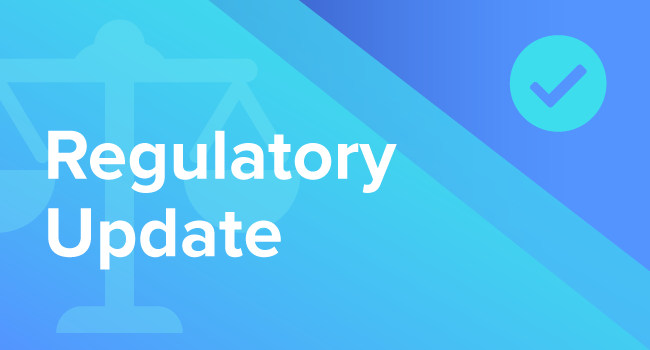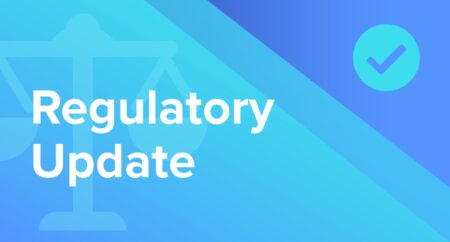The Cost of Doing Nothing: An IT Perspective on Barriers to Upgrading Archiving Technology
The marketplace for solutions that support regulated industries has been undergoing a transformation. The first wave of adoption can be characterized mainly by firms implementing on-premises archiving applications centered on email, primarily for compliance purposes. The second wave featured a growing move to cloud-based archiving, again mainly focused on email with the addition of a small handful of other communications to address regulatory requirements.
Now, enterprises are accelerating their shift to cloud-based solutions and are actively moving to platforms that address a wide and ever-expanding set of communications and content types (e.g., Microsoft Teams, Slack, SMS/text messaging, etc.). The move to cloud solutions is beneficial, not only for compliance but also for legal, IT, privacy, customer insight and other business needs.
Robust cloud archiving platforms offer compelling advantages and can help IT better serve internal compliance and legal and teams with critical, ever-changing regulatory and e-discovery needs. Yet, despite their shortcomings, some firms continue to rely on legacy archiving applications.
Further compounding these gaps, as the current pandemic crisis highlights, managing and maintaining legacy on-premises archiving systems can prove problematic and introduce unexpected risks. In general, we’ve found that the primary adoption barriers to cloud archiving platforms center on these three perceived obstacles:
- Cost: Unclear and potentially significant expenses in acquiring new systems, migrating legacy data, extracting data when needed, and other factors give many firms pause.
- Risk: Potential data migration headaches, operational risks, and worries about new cloud archiving platform vendor capabilities are a concern to some firms.
- Inertia: Possible changes to compliance and legal workflows and to folder structures, along with unclear impacts on IT staffing lead some firms to hesitate when considering new systems.
Cost: Data Migration, IT Staff Headcount & More
Getting a new system up and running can be an expensive process, with migrating legacy data representing a significant cost that may take more time and services fees than expected. Many finance teams may perceive that existing on-premises legacy archive systems are a sunk cost (e.g., initial hardware, software, and installation) and see adding new storage and other requirements to be a fairly financially straightforward proposition.
The IT staff headcount required to operate the legacy archive is a known financial data point and the firm is obligated to compensate these employees whether they are extracting data from the archive or not. Also, some cloud-based providers charge very significant fees to extract data or provide incremental services. With these and other expensive factors in mind, many firms are hesitant to upgrade archiving systems.
Yet, it is important to keep overall corporate costs in mind when considering a new system. For example, while an on-premises archiving system likely represents capital committed years ago, the firm may be paying ongoing software maintenance and have significant annual personnel costs to maintain the legacy system. These staff members could be refocused on capturing other cost savings or productivity gains elsewhere in the firm.
Comparably, legal and compliance costs for legacy systems may be very high given that the system may perform poorly in producing the “right” set of communications for litigation or compliance processes. Further, the system may address only email, requiring other expenditures for managing other types of electronic communications.
Factoring in these and other costs, while ensuring that data migration and extraction costs remain reasonable, will likely show that “pay as you go” cloud-based archiving systems provide significant firm-wide cost advantages.
The Risk of Continuing with a Legacy Archive
Upgrading systems always entails some risk. For example, data may be lost or tampered with in transit. Or the new vendor’s application may lack key capabilities or essential infrastructure. Organizations report that they struggle with lack of flexibility and a broad array of obstacles with certain cloud archiving platforms.
The system may not be designed to be agnostic to any public cloud infrastructure to enable portability and flexibility (e.g., AWS, Microsoft Azure, and Google), or may lack adequate performance and scalability or security controls. Fines, litigation losses, reputational damage, and other woes stemming from data losses, inadequate performance or other system shortcomings can be very significant.
Continuing with a legacy archiving application, however, also entails risk. While the system may address email, it may simply not deliver the ability to capture and appropriately manage social media or a wide set of other communications. Also, the legacy system may not capture all native properties, attachments, and metadata of key content sources and likely will not support the ability to manage the full set of communications in context, exposing the firm to compliance and e-discovery risk. Cloud archiving platform offerings can vary widely.
Inertia: Limiting Potential Business Value
Corporate change can be hard. There is an old saying that only a baby likes to be changed. Users of legacy archiving systems may have come to depend on folder synchronization or other features particular to a system. Comparably, legal and compliance teams may be reluctant to modify their existing workflows. And, within the IT team itself, personnel may be concerned about potential headcount reduction in considering upgrading archiving technology or may worry about having the appropriate expertise for a new system.
Overcoming this inertia can be challenging, yet without taking this step, firms face significant obstacles. The ever-expanding mix of communications complicates compliance and introduces new sources of risk. Legacy archiving systems typically struggle here and frustrate new connective touchpoints with employees, customers and prospective customers. These older systems often translate to high, ongoing costs and to disjointed application silos (e.g., limited links between email archiving, social media capture, review, and other technologies).
Further, legacy systems limit the potential for additional business value – especially given the extensive set of communications that could be managed. Incorporating this extensive data set can greatly advance customer data mining, advanced analytics, and a broad set of other programs, yielding the potential for increased revenue, lower costs, competitive advantage and stronger customer retention. Outlining this business value is essential in getting beyond corporate inertia.
How IT Can Overcome These Challenges
To address these common adoption barriers to cloud archiving platforms, IT professionals should:
- Not pause, waiting for your “special moment”: Massive fines, big litigation losses, and major reputational damage have a unique ability to focus executive attention and limit future employment opportunities. Continuing to rely on legacy archiving tools entails significant compliance and e-discovery risk. Fact-based advocating for robust cloud archiving platforms can reduce firm-wide risk and bolster job prospects.
- Work with the team: Apart from traditional compliance requirements, increasing demands for more effective governance and e-discovery along with the imperative to better leverage IT resources are driving IT professionals to partner with their legal, compliance, security, privacy, and other stakeholders to understand the benefits that new archiving technologies, supported with appropriate programs, can deliver. This collective group should discuss and document firm-wide benefits that cloud archiving platforms can provide and communicate consolidated findings to the appropriate executive team.
- Leverage a cloud archiving platform – and pick the right one: Cloud has won. Cost, deployment speed, and other advantages of cloud solutions compared to on-premises applications are clear and compelling. Firms are steadily shifting away from legacy on-premises compliance tools. Bringing home this point, a 2019 Forrester analysis notes that 63% of decision-makers reported that their firms had implemented or were expanding their use of SaaS for archiving. Not all cloud archiving platform vendors are the same. Choose wisely.
- Really, really think beyond email: Email has been a key focus for compliance and e-discovery for many, many years. It’s clear though that the scope of data will keep fundamentally changing for compliance and risk mitigation. For internal collaboration, customer communications, and partner exchanges, organizations use an extensive and growing variety of tools like Microsoft Teams, Slack, and messaging apps designed for use on mobile devices. The vast majority of legacy archiving systems simply are not up to addressing an ever-expanding array of electronic communications.
- Plan for analytics, AI, or machine learning: Especially given the extensive set of communications that they manage, some new archiving platforms hold strong potential for additional business value. Incorporating large sets of extracted insights into relevant systems can greatly advance your customer data mining, advanced analytics, and other programs, yielding the potential for increased revenue, lower costs, improved competitive advantage, and stronger customer retention.
This is the third post in a three-part series about what keeps organizations from upgrading their compliance and e-discovery technology. Previously, we've heard the legal and compliance perspectives about what stakeholders think keeps companies from upgrading these important technology solutions. We’re interested in hearing from you about what might be preventing you from adopting cloud archiving platforms.
Share this post!
Smarsh Blog
Our internal subject matter experts and our network of external industry experts are featured with insights into the technology and industry trends that affect your electronic communications compliance initiatives. Sign up to benefit from their deep understanding, tips and best practices regarding how your company can manage compliance risk while unlocking the business value of your communications data.
Ready to enable compliant productivity?
Join the 6,500+ customers using Smarsh to drive their business forward.





Subscribe to the Smarsh Blog Digest
Subscribe to receive a monthly digest of articles exploring regulatory updates, news, trends and best practices in electronic communications capture and archiving.
Smarsh handles information you submit to Smarsh in accordance with its Privacy Policy. By clicking "submit", you consent to Smarsh processing your information and storing it in accordance with the Privacy Policy and agree to receive communications from Smarsh and its third-party partners regarding products and services that may be of interest to you. You may withdraw your consent at any time by emailing privacy@smarsh.com.
FOLLOW US